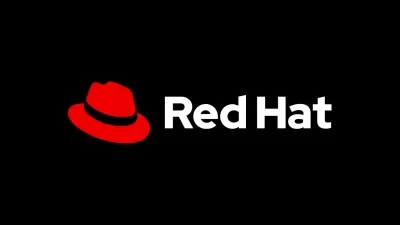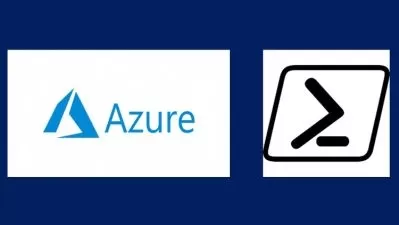CCIE DevNet Expert (v1.0) - Technical Classes
Ratnesh K - 45,000+ Students Worldwide
8:10:22
Description
With Ratnesh K 2xCCIE #61380
What You'll Learn?
- Software Design, Development, and Deployment
- Infrastructure as Code
- Network Programmability and Automation
- Create a Docker image (including Dockerfile)
- Security Automation
Who is this for?
More details
DescriptionAbout The Certification
Achieving Cisco Certified DevNet Expert certification validates your expert knowledge and proficiency in network automation, programmability, and secure automation tools.
To earn Cisco Certified DevNet Expert certification, you pass two exams: a qualifying exam that covers core software and automation development and design for Cisco platforms as well as a hands-on lab exam that covers software-driven network automation solutions through the entire network lifecycle, from designing and deploying to operating and optimizing.
Steps To CCIE DevNet Certification
To earn CCIE DevtNet, you pass two exams: a qualifying exam and hands-on lab exam:
Step 1: For Qualifying exam, pass the below recommended training and exam:
Developing Applications using Cisco Core Platforms and APIs (350-901 DEVCOR)
Step 2: Pass the Lab exam:
DevNet Expert-level lab (8-hour lab)
Topics :
1.1 Design a solution based on an on-premises, hybrid, or public cloud deployment,considering these factors:
1.1.a Deployment: maintainability, modularity (e.g., containers, VM, orchestration, automation, components, and infrastructure requirements)
1.1.b Reliability: high availability and resiliency
1.1.c Performance: scalability, latency, and rate limiting
1.1.d Infrastructure: monitoring, observability, and metrics (e.g., instrument placement and instrument deployment)
1.2 Recommend a deployment strategy to mitigate risk and impact on service availability, for a given scenario
1.3 Modify an existing network automation solution based on business and technical requirements (includes gap analysis)
1.4 Use Git in a CI/CD development workflow
1.5 Troubleshoot issues with a CI/CD pipeline (e.g., code-based failures, pipeline issues, and tool incompatibility)
2.1 Create a scalable solution for infrastructure automation (considering areas such as network impact, risk, and tool selection)
2.2 Build, manage, and operate a Python-based REST API with a web application framework (endpoints, HTTP request, and response)
2.3 Build, manage, and operate a Python-based CLI application to use a REST API
2.4 Consume and use a new REST API, given the documentation
2.5 Create a RESTCONF or NETCONF payload based on a given YANG module, and interpret the response
2.6 Create a NETCONF filter by using XPath
2.7 Configure network devices on an existing infrastructure by using NETCONF or RESTCONF, given YANG analysis tools
2.8 Create and use a role by utilizing Ansible to manage infrastructure, given support documentation
2.8.a Loop control
2.8.b Conditionals
2.8.c Use of variables and templating
2.8.d Use of connection plug-ins such as network CLI, HTTPAPI, and NETCONF
3.1 Create, modify, and troubleshoot scripts by using Python libraries and SDK documentation to automate against APIs (ACI, AppDynamics, DNA Center, FDM, Intersight, IOS XE, Meraki, NSO, Webex)
3.2 Automate the configuration of a Cisco IOS XE network device (based on a provided architecture and configuration), including these components:
3.2.a Interfaces
3.2.b Static routes
3.2.c VLANs
3.2.d Access control lists
3.2.e BGP peering
3.2.f BGP and OSPF routing tables
3.2.g BGP and OSPF neighbors
3.3 Deploy an application on a Cisco IOS XE device by leveraging the technologies of Guest Shell and application hosting
3.4 Modify and troubleshoot an automated test by using pyATS to meet requirements
3.4.a Create a testbed file for connecting to Cisco IOS, IOS XE, or NX-OS devices
3.4.b Gather current configuration and operational state from devices using the Genie parsers and models included with pyATS
3.4.c Develop and execute test jobs and scripts using AEtest to verify network health
3.5 Design a model-driven telemetry solution based on given business and technical requirements by using gNMI dial-in, gRPC dial-out, and NETCONF dial-in
3.6 Create YANG model-driven telemetry subscriptions
3.6.a Identify model elements and cadence
3.6.b On-change or event drive
3.6.c Optimize frequency
3.6.d Dial-out subscription
3.6.e Secure telemetry streams
3.6.f Confirm data transmission
3.6.g Identify network issues and make changes
4.1 Create a Docker image (including Dockerfile)
4.1.a From a provided image
4.1.b Expose ports
4.1.c Add or copy files
4.1.d Run commands during image build
4.1.e Manipulate entry point and initial commands
4.1.f Establish working directories
4.1.g Environment variables as part of a definition to control an application
4.1.h Docker ignore file
4.1.i Volumes
4.2 Package and deploy a solution by using Docker Compose
4.2.a Deploy and manage containers
4.2.b Define services, networks, volumes, and links
4.3 Package and deploy a solution by using Kubernetes
4.3.a Use deployments, secrets, services, ingress, volumes, namespaces, and replicas
4.3.b Manage the lifecycle of pods (e.g., scale up, scale down, help status, logs)
4.3.c Monitor pods by building health checks)
4.3.d Use the kubectl interface
4.4 Create, consume, and troubleshoot a Docker host and bridge-based networks and integrate them with external networks
5.1 Leverage OWASP secure coding practices into all solutions to meet given requirements
5.1.a Input validation
5.1.b Authentication and password management
5.1.c Access control
5.1.d Cryptographic practices
5.1.e Error handling and logging
5.1.f Communication security
5.2 Create a certificate signing request (CSR) by using OpenSSL; send CSR to a provided certificate authority; and use the certificate to secure a web application
5.3 Use OAuth2+ to obtain an authentication token
5.4 Use a secret management system to secure an application
5.5 Use tokens, headers, and secrets to secure a REST API
Who this course is for:
- Security engineers
- Network administrators
- Senior network automation engineer
- Consulting systems engineers
- Technical solutions architect
About The Certification
Achieving Cisco Certified DevNet Expert certification validates your expert knowledge and proficiency in network automation, programmability, and secure automation tools.
To earn Cisco Certified DevNet Expert certification, you pass two exams: a qualifying exam that covers core software and automation development and design for Cisco platforms as well as a hands-on lab exam that covers software-driven network automation solutions through the entire network lifecycle, from designing and deploying to operating and optimizing.
Steps To CCIE DevNet Certification
To earn CCIE DevtNet, you pass two exams: a qualifying exam and hands-on lab exam:
Step 1: For Qualifying exam, pass the below recommended training and exam:
Developing Applications using Cisco Core Platforms and APIs (350-901 DEVCOR)
Step 2: Pass the Lab exam:
DevNet Expert-level lab (8-hour lab)
Topics :
1.1 Design a solution based on an on-premises, hybrid, or public cloud deployment,considering these factors:
1.1.a Deployment: maintainability, modularity (e.g., containers, VM, orchestration, automation, components, and infrastructure requirements)
1.1.b Reliability: high availability and resiliency
1.1.c Performance: scalability, latency, and rate limiting
1.1.d Infrastructure: monitoring, observability, and metrics (e.g., instrument placement and instrument deployment)
1.2 Recommend a deployment strategy to mitigate risk and impact on service availability, for a given scenario
1.3 Modify an existing network automation solution based on business and technical requirements (includes gap analysis)
1.4 Use Git in a CI/CD development workflow
1.5 Troubleshoot issues with a CI/CD pipeline (e.g., code-based failures, pipeline issues, and tool incompatibility)
2.1 Create a scalable solution for infrastructure automation (considering areas such as network impact, risk, and tool selection)
2.2 Build, manage, and operate a Python-based REST API with a web application framework (endpoints, HTTP request, and response)
2.3 Build, manage, and operate a Python-based CLI application to use a REST API
2.4 Consume and use a new REST API, given the documentation
2.5 Create a RESTCONF or NETCONF payload based on a given YANG module, and interpret the response
2.6 Create a NETCONF filter by using XPath
2.7 Configure network devices on an existing infrastructure by using NETCONF or RESTCONF, given YANG analysis tools
2.8 Create and use a role by utilizing Ansible to manage infrastructure, given support documentation
2.8.a Loop control
2.8.b Conditionals
2.8.c Use of variables and templating
2.8.d Use of connection plug-ins such as network CLI, HTTPAPI, and NETCONF
3.1 Create, modify, and troubleshoot scripts by using Python libraries and SDK documentation to automate against APIs (ACI, AppDynamics, DNA Center, FDM, Intersight, IOS XE, Meraki, NSO, Webex)
3.2 Automate the configuration of a Cisco IOS XE network device (based on a provided architecture and configuration), including these components:
3.2.a Interfaces
3.2.b Static routes
3.2.c VLANs
3.2.d Access control lists
3.2.e BGP peering
3.2.f BGP and OSPF routing tables
3.2.g BGP and OSPF neighbors
3.3 Deploy an application on a Cisco IOS XE device by leveraging the technologies of Guest Shell and application hosting
3.4 Modify and troubleshoot an automated test by using pyATS to meet requirements
3.4.a Create a testbed file for connecting to Cisco IOS, IOS XE, or NX-OS devices
3.4.b Gather current configuration and operational state from devices using the Genie parsers and models included with pyATS
3.4.c Develop and execute test jobs and scripts using AEtest to verify network health
3.5 Design a model-driven telemetry solution based on given business and technical requirements by using gNMI dial-in, gRPC dial-out, and NETCONF dial-in
3.6 Create YANG model-driven telemetry subscriptions
3.6.a Identify model elements and cadence
3.6.b On-change or event drive
3.6.c Optimize frequency
3.6.d Dial-out subscription
3.6.e Secure telemetry streams
3.6.f Confirm data transmission
3.6.g Identify network issues and make changes
4.1 Create a Docker image (including Dockerfile)
4.1.a From a provided image
4.1.b Expose ports
4.1.c Add or copy files
4.1.d Run commands during image build
4.1.e Manipulate entry point and initial commands
4.1.f Establish working directories
4.1.g Environment variables as part of a definition to control an application
4.1.h Docker ignore file
4.1.i Volumes
4.2 Package and deploy a solution by using Docker Compose
4.2.a Deploy and manage containers
4.2.b Define services, networks, volumes, and links
4.3 Package and deploy a solution by using Kubernetes
4.3.a Use deployments, secrets, services, ingress, volumes, namespaces, and replicas
4.3.b Manage the lifecycle of pods (e.g., scale up, scale down, help status, logs)
4.3.c Monitor pods by building health checks)
4.3.d Use the kubectl interface
4.4 Create, consume, and troubleshoot a Docker host and bridge-based networks and integrate them with external networks
5.1 Leverage OWASP secure coding practices into all solutions to meet given requirements
5.1.a Input validation
5.1.b Authentication and password management
5.1.c Access control
5.1.d Cryptographic practices
5.1.e Error handling and logging
5.1.f Communication security
5.2 Create a certificate signing request (CSR) by using OpenSSL; send CSR to a provided certificate authority; and use the certificate to secure a web application
5.3 Use OAuth2+ to obtain an authentication token
5.4 Use a secret management system to secure an application
5.5 Use tokens, headers, and secrets to secure a REST API
Who this course is for:
- Security engineers
- Network administrators
- Senior network automation engineer
- Consulting systems engineers
- Technical solutions architect
User Reviews
Rating
Ratnesh K - 45,000+ Students Worldwide
Instructor's Courses
Udemy
View courses Udemy- language english
- Training sessions 70
- duration 8:10:22
- Release Date 2022/12/13











